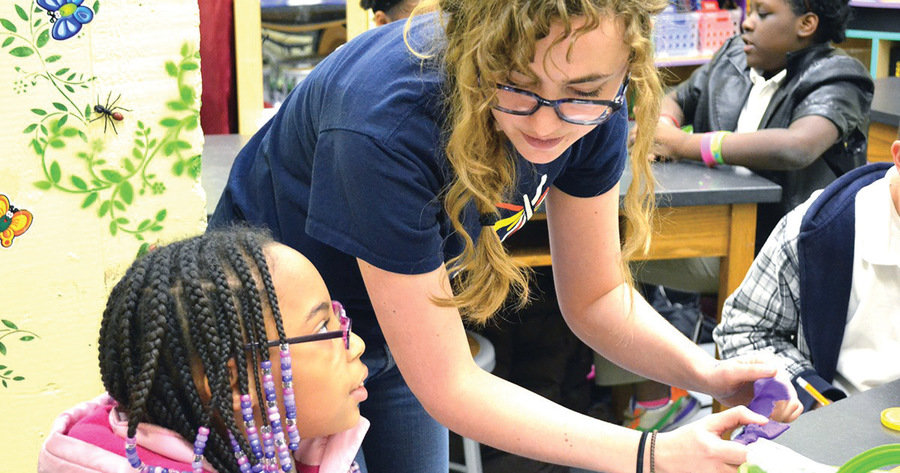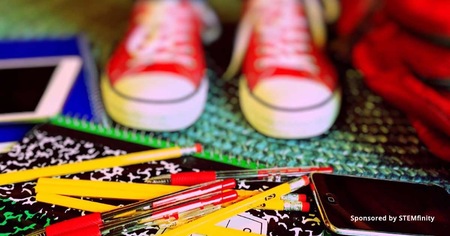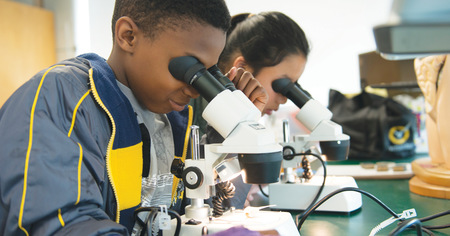Are you happy with your program's approach to STEM? If you are struggling to provide a cohesive-trained STEM curriculum, you might try Project-Based Learning (PBL) to achieve some of your STEM goals.
PBL is a child-centric teaching strategy that sets meaningful and relevant problems or challenges that young people investigate over a period of time. PBL involves young people actively in their learning. They are in charge of finding the answers, distilling questions, and developing the skills and knowledge they need to achieve the goals they set for themselves.
Do not be fooled: PBL is different from simply assigning a cumulative group project at the end of a curriculum unit. Assigning young people to design a travel poster to the moon at the end of a space unit is not PBL. Posters, dioramas and model volcanoes are familiar to all of us, but these are essentially passive pursuits. They do not really engage young people with the content in a meaningful way. Many young people disengage from this type of project because they do not perceive it as being relevant and meaningful to their lives. Instead of passively designing a travel poster to the moon, you could host a discussion on whether young people believe they will be able to visit the moon when they are older. Such a discussion inspires further questions to explore. It requires knowledge of the moon, the technology that is available today, costs, the time involved, and what would need to happen in the future to make space travel achievable for tourism.
With PBL, young people are guided to create engaging, complex, authentic, real-world questions of which they take ownership. The goal is to design a challenge in which young people have a stake and want to do well. A PBL approach inspires young people to want to gain knowledge and acquire skills. By giving young people responsibility and a personal stake, PBL makes learning more enjoyable and rewarding. It prepares young people with skills they will need for college and their careers.
PBL is a great fit for afterschool's unique learning environment. Afterschool programs tend to have a flexible curriculum that can be shaped around the interests of young people. The less formal setting encourages collaboration, and multi-age grouping helps drive peer-to-peer learning. STEM provides the perfect content for developing PBL. The best practices of STEM, hands-on inquiry and the development of 21st-century skills align and mirror the goals and processes that are essential for PBL success. PBL is fitting for nonspecialist STEM staff, as this approach prefers staff to not have all the answers so they can discover and explore the content along with young people. When young people are invested in their own educational outcomes, it can make teaching more rewarding—especially for a teacher who may not have expertise in a content area such as STEM.
THE CORNERSTONES OF PBL
Create a Need to Know
Design an entry event to activate interest and initiate questions that will engage young people. The goal is to foster a discussion that creates a need to know from a challenge that makes the material relevant to young people. For example, you could show a video of the first moon landing or share information about current projects that are attempting to take tourists to space to initiate the moon tourism PBL activity mentioned earlier.
A Driving Question
Keeping your education goal in mind, create an open-ended, driving question with young people that is provocative and complex. The question should be a challenge that inspires collaboration, critical thinking and inquiry. A question for the moon tourism activity could be as simple as, "Will I be able to visit the moon when I am 30?" or as complex as, "Should tourists be allowed to visit the moon?"
Student Centric
The more voice and choice young people have to meet the challenge, the more relevant and meaningful the project will be. Choices include the topics they will focus on to answer the driving question, the resources they will use and the materials they will use to present their answers. To prevent everyone from being overwhelmed, start the PBL by simplifying the process and coming up with a limited menu of choices for young people. This middle ground allows you to provide choice and freedom within the constraints of the time and resources of your program.
Collaboration, Communication, Critical Thinking and Inquiry
PBL projects should focus around the development of the listed 21st-century skills. A teacher should constantly be teaching and assessing these skills when implementing a PBL. Young people should be encouraged to follow a path that begins with their own questions, leads to a search for resources (utilizing technology where appropriate), the discovery of answers, and the formulation of conclusions from their work. Strive to nurture an atmosphere that values questioning, hypothesizing, failure and an openness to new ideas and perspectives.
Present, Publish and Perform
Formalized peer review should be used for feedback and revision throughout PBL. Young people should experience that real-world work involves trial and error and frequent failure. Knowing the right answer from the start is rare, and most conclusions only come through work and learning. Deadlines should be agreed upon and a presentation of the findings scheduled. Presentation within the group is fine, but the higher stakes of involving other young people, teachers and even an outside audience helps to make the work more meaningful.
PBL Examples for Driving Questions
- How can we improve water quality in a local body of water?
- What could you design to make camping more comfortable?
- Design the perfect toy for a 5-year-old.
- Design the perfect candy store. Add math to the discussion by determining how to price and measure the candy.
- How can we reduce the spread of a cold at our program?
- Discover the recipe for the perfect slime.
- What are the best ways to keep warm in winter?
- Design a car that can jump a one-foot gap.
Well-orchestrated PBL takes work and planning and a lot of teacher interaction, in most cases. Setting PBL projects does not give staff a free ride. The key to setting the right tone is to start small and build your confidence while training young people to be accepting of this new approach to learning.
Resources
Web resources for PBL seem to start and end at Buck Institute for Education (BIE), an organization that has led the charge toward Project-Based Learning for 25 years, for all grade levels and subject areas.
Written by Andy the Science Wiz, NAA Stem Specialist, Andy Allan.




